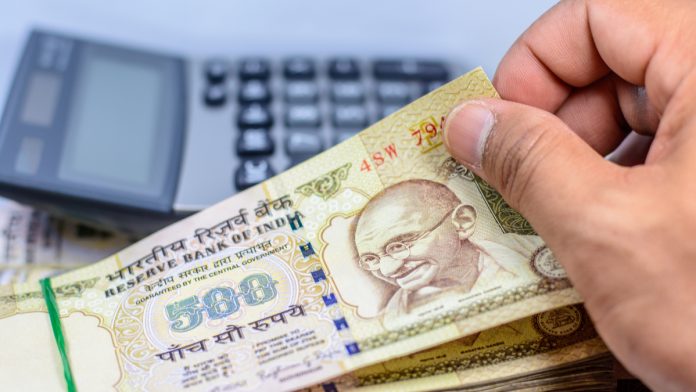- Indian Rupee (INR) slips despite strong domestic equities
- Oil prices decline
- US Dollar (USD) steadies after steep declines yesterday
- US initial jobless claims
The US Dollar Indian Rupee (USD/INR) exchange rate is edging higher on Thursday after losses in the previous session. The pair slumped -0.18% on Wednesday settling at 74.46. At 11:40 UTC, USD/INR trades +0.04% higher at 74.49.
The Indian Rupee is finding some support from a strong equities market. Indian equities have extended their gains to an all time high. Positive sentiment is lifting IT, financials and metal stocks ahead of the earnings, which are expected to be robust.
Asian markets were also boosted by better than expected economic data from China as retail sales and industrial production came in ahead of forecasts.
Also supporting the Rupee are falling oil prices. WTI trades lower as Saudi Arabia and United Arab Emirates reconciled paving the way to an OPEC agreement to raise oil production in the second half of the year.
The US Dollar is trading a few pips higher versus the Rupee. However, it is trading flat versus major peers. The US Dollar Index, which measures the greenback versus a basket of major currencies trades steady at 92.40 after steep losses in the previous session.
The US Dollar tumbled in the previous session after Federal Reserve Chair Jerome Powell soothed the markets by reiterating that he considered elevated inflation to be temporary. The Fed Chair said that the US economic recovery still has a way to go until the Fed would consider tightening monetary policy.
Fed Powell’s announcement came after US wholesale inflation posted its biggest gain in 10 to 12 years. PPI rose 7.2% year on year in March. Consumer inflation is also elevated at 5.4% year on year in June.
Looking ahead investors will turn their attention to initial jobless claims numbers due later today. Expectations are for initial jobless claims to decline to 360,000, down from 373,000 last week. Any signs that the labour market recovery is slowing could drag on demand for the US Dollar





